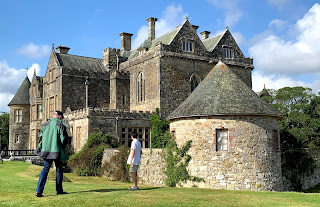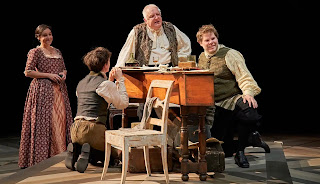Trips down memory lane often lead to disappointment. Case in point: a recent return to the once-remarkable Cinnamon Club was profoundly underwhelming. Meanwhile, an unexpected drop in to one of the three branches of Kricket demonstrated the innovation and excitement Cinnamon Club was once known for, but at a fraction of the price.
Let’s start with the disappointment.
The Cinnamon Club was one of the places to be seen in the '00s. Its concept of Indian food as something worthy of fine dining was, at the time, revolutionary. Vivek Singh shot to celebrity chef-dom and inspired a howdah of imitators across the UK. Turning its back on the cheap and easy "Anglo-Indian" of the local curry house, the Cinnamon Club and its progeny introduced a more delicate and subtle side of Indian cuisine, fit for fine dining and grand events. Even the decor was revolutionary. No flock wallpaper or tinny Bollywood music here. Singh had rescued the old Westminster Library from dereliction and kept its floor-to-ceiling bookshelves intact and full. You ate in what was once a grand reading room, surrounded by literature, and your bill came tucked inside a book.
Throughout the restaurant's first decade I was there regularly for everything from corporate events to private parties to dinner with friends. I hadn’t been there in its second. Regular readers will know that the combination of my husband’s tomato allergy and his dislike of anything too spicy makes Indian a rare cuisine for us, and we only attempt it with kitchens we trust on the allergen procedure front. We had fantastic luck at Quilon nearby (review here) so I thought returning to the godfather of Indian fine dining in the UK would be a good bet. Not so.
On the positive side, the food was delicious, though not the novel experience it was in the ‘00s. We both opted for fish for starters (kingfish and a salmon carpaccio) and moved on to venison and king prawns. Puddings … a caramelised banana and pistachio mille-feuille and a creme brûlée laced with spices of the Indies … were by far the best part of the meal. The presentation was beautiful and the spicing exquisitely delicate, each flavour rolling over the other with distinct character and nothing overwhelming the star protein on each dish. If all I had to consider was the food, it would go down as a perfectly pleasant evening, though not special enough to prompt a return engagement any time soon.
The problem was everything else. First of all, we were sat in a balcony area off the main dining room that I had not realised existed. When part of your appeal is your iconic dining space, putting people in another setting starts the evening with frustration. And when you’re in the middle of a pandemic, with restrictions still in place, and you populate every table in a low-ceilinged room with little ventilation, you add anxiety to the frustration. (Six days later, despite being fully vaccinated, my husband tested positive for Covid. Fortunately, the vaccination reduced the illness to a bad cold, and I can't confirm he picked it up at the Cinnamon Club, but nowhere else that weekend were we in such a confined space with so little air flow.) Lesson learned: if you are booking at the Cinnamon Club, insist on the main room or don't go.
Next, the tomato challenge. At the aforementioned Quilon, we were able to opt in to the entire chef's menu. Almost nothing was a problem. Almost everything everything could be altered to accommodate. It was a much bigger deal at the Cinnamon Club, where the chef's menu was strictly off-limits (giving me a sense that much more was pre-prepared here). Even though they had been warned of the allergy at the time of booking, the waiter had to do several consultations with the kitchen to see what dishes were OK. Meaning it took an exceptionally long time just to get our orders in. My husband is used to asking "what can I eat?" and going with recommendations. That process was hard work here.
And then, the service. Our starters took well over half an hour to arrive, and when they did, they brought my husband the wrong dish. (Something he said would be his default if they couldn't make his first choice without tomato, which they did.) Given that my starter was served hot, it meant that I ate alone, and we waited another 15 minutes before his finally arrived. We might have enjoyed some wine while we were waiting, but the wine waiter took so long to take our order that the wine showed up halfway through my starter. (At least the husband's delayed dish meant that he could enjoy the wine throughout.)
We had booked The Cinnamon Club well in advance, excited for a special night out as pandemic lockdowns eased and ready to explore a cuisine we rarely eat. Instead, we had an anxious evening with bad service and an enormous bill. Note that there are very few reasonable options on the wine list. We made a tactical mistake, instinctively ordering wine in a nice restaurant when beer would have been just as nice with the food and far better on the bill. I'm happy to lay out cash for a great dining experience, as scores of articles on this blog attest. But there are few things worse than the disgruntlement of parting with your credit card for an evening deeply inferior to something you could have had for half the price.
Or a quarter of the price ... if you go to Kricket Soho and drink beer.
To be fair, Kricket didn't have to face the tomato challenge, since I was out with a friend instead of the husband. And there's no fine dining or fancy presentation to challenge the staff here. The concept is a crazy mash-up (should I say masala?) of Indian street food, tapas-style sharing plates, and British ingredients turned on their head. You can hardly call it a dining room. It's a long bar with stools that overlook the food prep, with a few tables along the outside wall and ... while the pandemic curtails traffic in central London ... a few picnic tables outside on Denman Street. But the service is light years ahead of the Cinnamon Club in attitude, speed and information volunteered about the dishes. And the tastes! Every dish was eye-rollingly delicious, leaving us wanting to order more even when we were full.The Hyderabadi aubergine, with coconut, peanut and curry leaf, would tempt even the most resistant to that vegetable, showing off its essential beauty as a conduit of other flavours. Another item that divides people, sardines, swam in a lusciously spiced tomato chutney given added life with ginger pickle and a bit of fresh fennel. If you think the taste of that fish is too strong, this dish will convince you otherwise as that chutney pulls back the flavour profile. Thankfully, we had the brown butter paratha on hand to scoop up every last drop. The love of British products is obvious in the rabbit and pork fat kebab, where a spice-laden "sulla" sauce perks up the rabbit, while the pork fat retains the rabbit's moisture and flavour. Carrot pickle comes on the side. Keralan fried chicken was a brilliant variation on a classic, best dipped in lashings of curry leaf mayonnaise.
Sweets are limited. We split the Mishti Doi. a puddle of caramelised white chocolate with a panna cotta-like consistency dappled with strawberries, hazelnut and mint. Its most striking element was an almost overwhelming flavouring of cardamom. White chocolate is tricky, often managing to be too sweet without actually tasting of anything. The cardamom here actually brought out the taste of the chocolate while holding back the sugar.When not enjoying the luscious food, we were entertained by the clientele. There'd been plenty of open spots at 7, but by 9 the place was heaving with primped and preened 20-somethings out to see and be seen. Kricket's owners, Will Bowlby and Rik Campbell, are due to open what they're describing as a "speakeasy" in the space next door in September, and they appeared to be hosting a preview evening. A parade of extraordinary costumes streamed by us, high heels, make-up and suits seeming as exotic, after lockdown, as the spice mixes on our plates.
Time moves on. Twenty years ago, the young and glamourous were flocking to The Cinnamon Club. Today, it's Kricket. Everything about my recent experiences makes Kricket my preference of the two. But it's worth remembering that Kricket wouldn't exist without the revolution Vivek Singh started in Westminster. And, someday, Kricket will be old and tired. That's how the culinary world turns, and how we diners can find our enjoyment. As long as we're brave enough to follow new roads and be wary of memory lane.





















